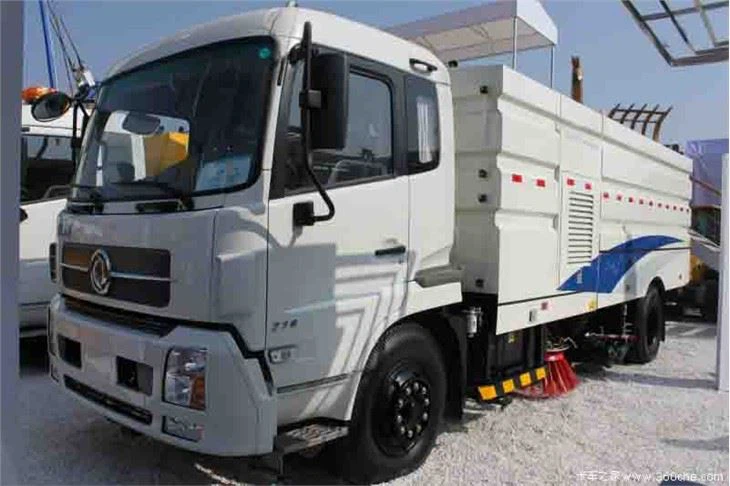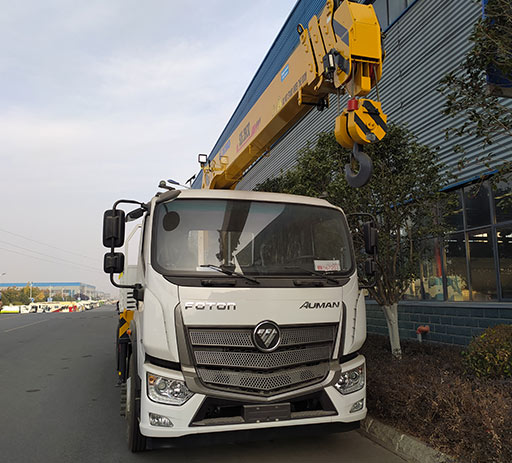Understanding Front Loader Garbage Trucks: The Comprehensive Guide

Introduction
Front loader garbage trucks have revolutionized waste management, providing efficiency and effectiveness in the removal of trash from urban and rural areas. These vehicles are designed for the modern age, offering numerous benefits over traditional garbage collection methods. In this article, we will explore the mechanics of front loader garbage trucks, their advantages, operational tips, and answers to frequently asked questions. By the end, readers will have a thorough understanding of front loader garbage trucks and their role in maintaining clean communities.
The Basics of Front Loader Garbage Trucks
1. What Is a Front Loader Garbage Truck?
A front loader garbage truck is a specialized vehicle equipped with a front-mounted dumpster or container. It utilizes a hydraulic lifting mechanism to raise and empty bins into its large rear compartment. This design allows for fast and efficient waste collection, especially in urban environments where time and space are often limited.
2. Key Components of Front Loader Garbage Trucks
| Component | Description |
|---|---|
| Chassis | The base frame that supports the entire truck. |
| Cab | The driver’s compartment, where the operator controls the vehicle. |
| Hydraulic System | The mechanism responsible for raising and lowering the front loader prongs. |
| Loader Arms | The arms that grip the waste bins for lifting and dumping. |
| Container | The large compartment where waste is stored before being emptied at a landfill. |
Advantages of Using Front Loader Garbage Trucks
1. Increased Efficiency and Speed
Front loader garbage trucks can collect waste more quickly than traditional methods. They are capable of handling multiple stops in shorter time frames, which is essential for high-traffic areas.
2. Reduced Physical Labor
The hydraulic lifting system minimizes the need for manual labor, significantly reducing the strain on workers. This not only enhances safety but also lowers operational costs related to injuries and insurance.
3. Versatility
These trucks are versatile and can accommodate various types of waste containers. They are useful in diverse environments such as residential neighborhoods, commercial areas, and construction sites.

4. Enhanced Safety Features
Modern front loader garbage trucks come equipped with necessary safety features, including rearview cameras and sensors that help prevent accidents during operations.
5. Environmentally Friendly
By efficiently collecting waste and recyclables, front loader garbage trucks contribute to reducing litter and promoting recycling efforts in communities.
6. Cost-Effective Operation

The long-term benefits of utilizing front loader garbage trucks often outweigh initial investments. High efficiency, reduced labor costs, and minimized wear and tear on the vehicle can lead to significant savings.
Operational Insights for Front Loader Garbage Trucks
1. Proper Training for Operators
Operators need thorough training to navigate front loader garbage trucks safely and efficiently. Training should focus on understanding vehicle controls, safety procedures, and route optimization.
2. Maintenance Tips
Regular maintenance is crucial for preserving the lifespan of front loader garbage trucks. Here are some vital maintenance tips:
- Inspect and service the hydraulic system regularly.
- Check brake systems and lights before each shift.
- Clean the container to prevent odor and corrosion.
- Monitor tire pressure and condition frequently.
3. Route Optimization Strategies
Efficient routing can drastically improve collection schedules. Utilize GPS technology and route optimization software to plan the most efficient routes, taking traffic patterns and collection volumes into account.
3.1 Example of Efficient Routing
For instance, if a garbage truck services a neighborhood with a high density of homes, it can schedule pickups during early mornings when traffic is lighter, ensuring quicker collection times.
Challenges in Using Front Loader Garbage Trucks
1. High Initial Costs
While operational savings are significant, the initial purchase price of front loader garbage trucks can be quite high, potentially limiting access for smaller municipalities or companies.
2. Training and Skill Requirements
New operators may require extensive training to use these trucks effectively, which can initially divert resources toward training programs.
3. Limited Maneuverability
Front loader garbage trucks may face challenges navigating tight spaces or areas with limited access due to their size and turning radius.
Innovations in Front Loader Garbage Trucks
1. Electric Front Loader Garbage Trucks
With the growing emphasis on sustainability, electric front loader garbage trucks are gaining traction. These vehicles reduce emissions and noise pollution, making them suitable for urban environments.
2. Smart Technology Integration
Smart technology such as telematics and IoT (Internet of Things) applications help monitor vehicle health, optimize routes, and enhance safety features. These innovations encourage efficient fleet management practices.
2.1 Practical Example
For instance, a fleet manager can track the location and condition of each truck in real time, allowing them to allocate resources more effectively and respond quickly to operational challenges.
Best Practices for Waste Management with Front Loader Trucks
1. Regular Community Engagement
Communicating with the community about proper waste disposal methods can reduce contamination in recycling bins and improve overall waste collection efficiency.
2. Encouraging Recycling
Implement programs to educate residents on recycling practices, which can significantly reduce waste volume collected and promote environmental sustainability.

3. Collaborating with Local Authorities
Work closely with local governmental bodies to ensure compliance with waste management regulations and best practices.
Future of Front Loader Garbage Trucks
1. Growing Demand for Automation
The industry is witnessing a surge in demand for automated waste collection systems. Innovations in robotics and AI will likely shape the future of front loader garbage trucks, leading to more efficient operations.
2. Emphasis on Sustainability
As environmental concerns continue to rise, the adoption of greener technologies, such as biofuels and hybrid models, will be paramount for future front loader garbage trucks.
FAQs about Front Loader Garbage Trucks
1. How do front loader garbage trucks operate?
Front loader garbage trucks use a hydraulic lifting system to raise waste bins and dump their contents into the truck’s rear compartment. This process allows for quick and efficient waste collection.
2. What types of waste can front loader garbage trucks handle?
These trucks can handle a variety of waste types, including residential garbage, commercial waste, recycling materials, and construction debris, depending on the truck’s specifications.
3. What are the safety features of front loader garbage trucks?
Modern front loader garbage trucks are equipped with various safety features, such as rearview cameras, side mirrors for better visibility, and sensors to detect obstacles during operation.
4. How do municipalities finance front loader garbage trucks?
Municipalities often finance the purchase of front loader garbage trucks through budget allocations, grants, or leasing programs. This financing is typically spread over several years to mitigate immediate financial impacts.
5. Are front loader garbage trucks environmentally friendly?
When properly used, front loader garbage trucks can contribute to environmentally friendly practices by ensuring efficient waste collection and promoting recycling, especially when newer models incorporate electric or hybrid technology.
6. What is the average lifespan of a front loader garbage truck?
The average lifespan of a front loader garbage truck can range from 10 to 15 years, depending on usage, maintenance, and the conditions in which it operates.
